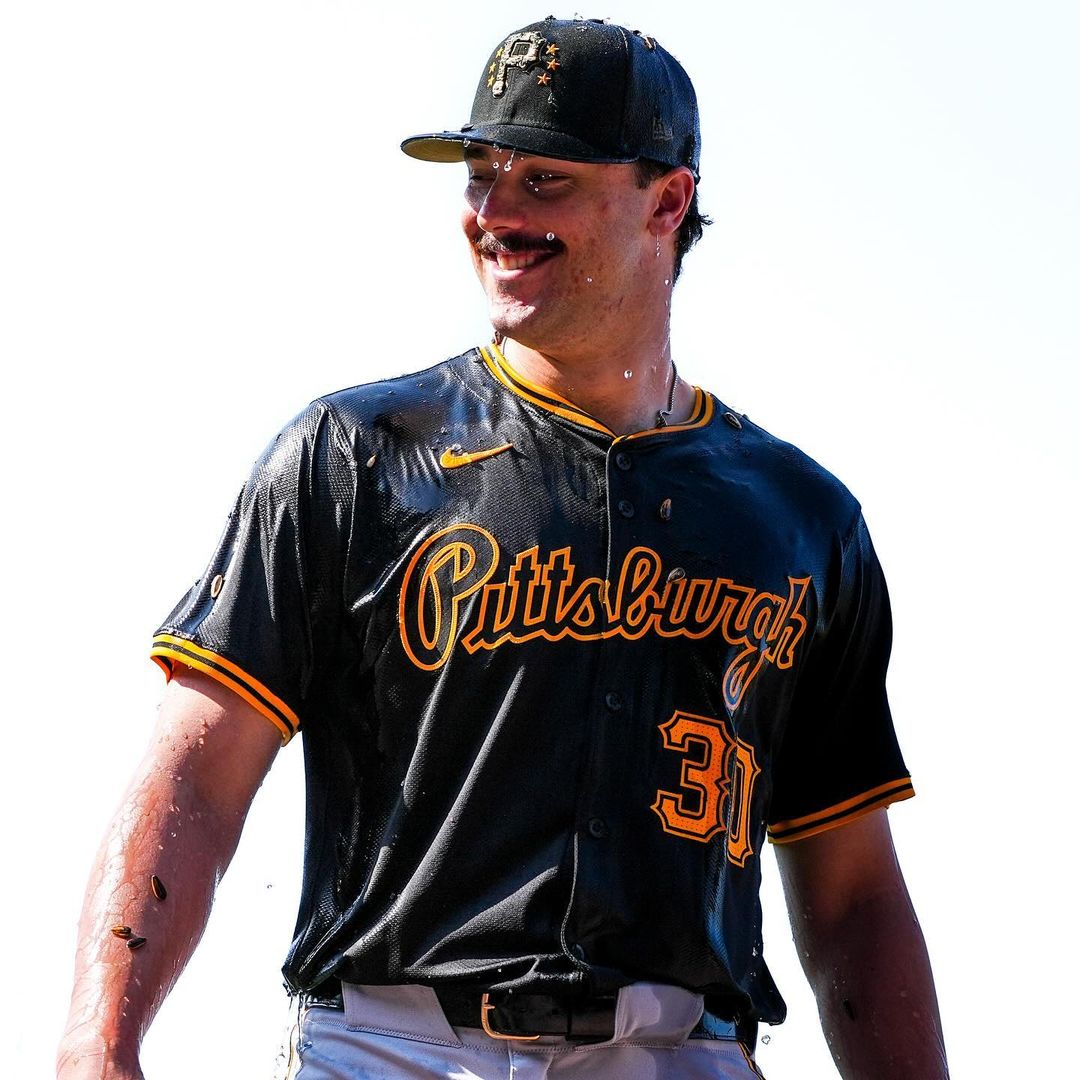

Like a menacing cloud that casts a shadow over the careers of flame-throwing pitchers, the specter of the dreaded Tommy John surgery looms large over Major League Baseball. The risk of devastating elbow injuries escalates with the radar guns lighting up with triple-digit readings, leaving fans and teams tittering equally on edge. However, amidst this apprehension, Hall of Famer John Smoltz has shared a glimmer of hope, shedding light on a unique approach to safeguarding the much-prized arm of the Pittsburgh Pirates’ phenomenal prospect-turned-big-leaguer, Paul Skenes.
Watch What’s Trending Now!
Smoltz, a battle-tested veteran with a wealth of experience in the pitching factory himself, recently delved into a captivating conversation with Ben Verlander on FSN’s “Flippin’ Bats with Ben Verlander” podcast. In the discussion centered around Skenes, the Bucs’ first overall pick in the 2023 MLB Draft, the duo chose to reflect on the delicate balance between unleashing his electric arm and preserving its longevity.
ADVERTISEMENT
Smoltz’s unconventional approach for a very precious Paul Skenes
During the podcast, Smoltz expressed his reservations about imposing strict pitch counts and innings limits on young pitchers like Skenes. The veteran has stated, firmly believing that such restrictions can hinder their development and prevent them from reaching their full potential. “I’m never a fan of 115-pitch limit or 160-inning limit—you don’t know, it’s not universal,” he declared, advocating for a more individualized approach to workload management.
View this post on Instagram
Smoltz’s skepticism stems from the belief that each pitcher is unique and responds differently to their assigned workloads. By pigeonholing young arms into arbitrary restrictions, teams often risk stifling their growth and limiting their ability to adapt to the demands of the game. The MLB legend proposes they follow a more nuanced approach instead—one that considers each pitcher’s individual strengths, weaknesses, and physiological makeup.
ADVERTISEMENT
Smoltz’s stance on Paul Skenes challenges the long-prevailing trend in modern baseball, where caution often reigns supreme. In an era where teams are getting increasingly hesitant to push their young pitchers beyond individual perceived limits, his call for a more segregated approach is both refreshing and thought-provoking. It opens the door for quite a paradigm shift in pitcher development, one that prioritizes long-term sustainability over short-term preservation. But Smoltz’s philosophy doesn’t advocate for recklessness.
Paul Skenes is unreal pic.twitter.com/IiMnm0dTu9
— Baseball Quotes (@BaseballQuotes1) May 17, 2024
ADVERTISEMENT
Rather, he emphasizes the importance of closely monitoring Skenes’ own mechanics and stress levels. By paying meticulous attention to his delivery and fatigue, the Pirates can identify any red flags early on and then promptly make the necessary adjustments to mitigate the risk of injury. “You just got to make sure he repeats his mechanics, and he’s in the best spot to be competing, day in and day out,” Smoltz advised, underscoring the significance of consistent and efficient movement patterns. And his concerns about Skenes’ arms’ health are not unfounded.
Unleashing the Beast: Paul Skenes’ electric arsenal and lofty expectations
Freshly shipped out of LSU, this 21-year-old phenom possesses a blazing fastball that routinely touches triple digits (ranging anywhere between 101 and 103 mph) and a funky arm angle that adds another layer of deception. His debut showcased glimpses of this raw power: 102-mph fastballs whizzing past bewildered batters and a slider that, while still a work in progress, hints at its future dominance. Per market reports, Skenes has consistently exceeded 100 mph since he started playing in the majors, hurling six pitches at 101 mph or faster in his debut—a feat unmatched by any other starter in the 2024 season.
ADVERTISEMENT
But with this raw power comes the inherent risk of injury, a reality that John Smoltz acknowledges but refuses to let the ace succumb to. He pointed out during the podcast that Skenes’ fastball is “hard to hit,” and once the slider “gets turned in the corner and doesn’t get on the side of the ball, he’s going to be tough.” The veteran firmly believes that Skenes was drafted number one overall for a reason, and this year serves as a crucial stepping stone in his development.
"Go ahead and adjust. Good luck." -Paul Skenes on hitters having more film to watch now pic.twitter.com/nzq9wwStBc
— Talkin’ Baseball (@TalkinBaseball_) May 17, 2024
Despite the lurking danger of injury, Smoltz remains optimistic about Skenes’ future, envisioning a scenario where he becomes the Buccos’ chosen ace and leads them to postseason glory. He sees in Skenes the potential to be a “wipeout starter,” the kind of pitcher who can single-handedly change the course of a playoff series. This is why he advocates for a measured approach to Skenes’ development, urging the team to allow him to “learn on the job” and face the challenges that come with pitching in the major leagues.
ADVERTISEMENT
“This year is a good test drive,” Smoltz remarked to Ben, emphasizing the importance of allowing Paul Skenes to learn and grow on the job. Rather than imposing high-volume innings at once, by gradually increasing his workload and exposing him to the rigors of major league competition, the Pirates can nurture his talent and prepare him for the challenges that lie ahead. It’s a balancing act, for sure—but one that Smoltz believes is essential for Skenes to reach his full potential and become the dominant force he has always been destined to be.
ADVERTISEMENT
ADVERTISEMENT
ADVERTISEMENT

